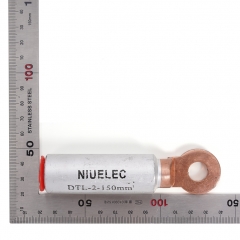Cable Connectors: Enhancing Electrical Efficiency and Reliability
Types of Cable Connectors and Their Uses
Cable connector are vital components in any electrical system, providing secure and efficient connections between wires and devices. There are various types of cable connectors, each designed for specific applications. Common types include butt connectors, ring terminals, spade terminals, and bimetallic lugs.
Types of Cable Connectors and Their Uses
Advantages of High-Quality Cable Connectors in Electrical Projects
How to Choose the Right Cable Connector for Your Needs
Installation Best Practices for Cable Connectors
Troubleshooting Common Issues with Cable Connectors
Butt connectors are used to join two wires end-to-end, ensuring a continuous electrical path. Ring terminals are circular connectors that fit over a stud or screw, providing a robust and secure connection. Spade terminals, shaped like a fork, allow for easy connection and disconnection in electrical systems. Bimetallic lugs, such as the DTL-2 cable bimetallic lug, are particularly useful for connecting aluminum and copper conductors, ensuring a stable and efficient electrical connection in mixed-metal systems.
Advantages of High-Quality Cable Connectors in Electrical Projects
Using high-quality cable connectors in electrical projects offers numerous advantages. Firstly, they ensure reliable electrical connections, reducing the risk of power loss, overheating, and electrical fires. High-quality connectors are designed to withstand various environmental conditions, including temperature fluctuations, moisture, and corrosion, thereby enhancing the longevity and safety of the electrical system.
Another significant advantage is improved efficiency. High-quality connectors minimize electrical resistance at connection points, ensuring that power is transmitted effectively throughout the system. This efficiency is crucial in both residential and industrial applications, where consistent and reliable power delivery is essential.
Additionally, using top-grade connectors can save time and money in the long run. Their durability reduces the need for frequent maintenance and replacements, thereby lowering overall project costs. Investing in quality connectors is a prudent decision that ensures the long-term success and reliability of electrical installations.

How to Choose the Right Cable Connector for Your Needs
Selecting the appropriate cable connector for your specific needs requires careful consideration of several factors. First, identify the type of conductor material you are working with, whether it is copper, aluminum, or a combination of both. Bimetallic lugs, such as those available on NiuElec, are ideal for connecting different types of conductors.
Next, consider the current-carrying capacity of the connector. Ensure that the connector can handle the electrical load of your system without overheating or causing power loss. The size and type of the connector should match the wire gauge you are using to ensure a secure and efficient connection.
Environmental conditions also play a crucial role in connector selection. For outdoor or industrial applications, choose connectors that are resistant to moisture, corrosion, and extreme temperatures. This ensures that the connectors will perform reliably even in harsh conditions.
Finally, consider the ease of installation. Some connectors are designed for quick and easy installation, reducing labor time and potential errors. Choosing user-friendly connectors can significantly streamline the installation process, especially in large-scale projects.
Installation Best Practices for Cable Connectors
Proper installation of cable connectors is essential to ensure optimal performance and safety. Begin by thoroughly preparing the wires, stripping them to the appropriate length and ensuring they are clean and free of oxidation. Use the correct crimping tool for the specific type of connector to achieve a secure and reliable connection.
When installing connectors, ensure that they are properly seated and that there is no exposed wire that could lead to short circuits or other electrical faults. Inspect the connections carefully to verify that they are tight and secure.
In applications involving bimetallic lugs, like the DTL-2 cable bimetallic lug, follow manufacturer guidelines for installation. This may include using appropriate compounds to prevent galvanic corrosion between dissimilar metals.
Regularly inspect and maintain the connections to ensure they remain secure over time. Periodic checks can help identify potential issues before they become serious problems, thereby enhancing the reliability and safety of the electrical system.
Troubleshooting Common Issues with Cable Connectors
Despite careful selection and installation, issues with cable connectors can still arise. Common problems include loose connections, corrosion, and overheating. Loose connections can cause intermittent power loss and increased resistance, leading to overheating and potential fire hazards. To address this, ensure that all connections are tight and secure during installation and conduct regular inspections.
Corrosion is another common issue, especially in outdoor or industrial environments. Using connectors made from corrosion-resistant materials and applying protective coatings can mitigate this problem. Regular maintenance and cleaning of connectors can also help prevent corrosion.
Overheating at connection points can indicate an undersized connector or poor installation. Ensure that the connectors used can handle the electrical load of the system and that they are installed correctly. If overheating persists, consider upgrading to connectors with higher current-carrying capacities.
By understanding these common issues and implementing best practices, you can enhance the efficiency and reliability of your electrical systems, ensuring long-term performance and safety.